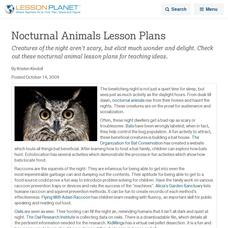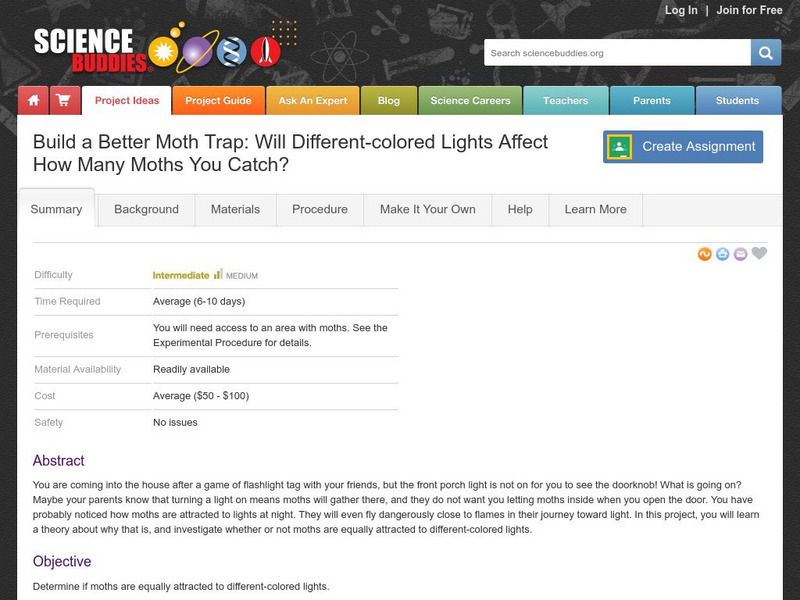Curated OER
Nocturnal vs. Diurnal Animals
First graders identify nocturnal and diurnal animals. In this animal activity, 1st graders discuss the differences between animals that are active during the day and those that are active at night. Students write summaries about their...
Curated OER
Animals Active at Night
Students identify animals that are active at night and the reasons why. They examine the features needed to be a nocturnal animal. They create a representation of one of the animals.
Curated OER
Nocturnal Animals Lesson Plans
Creatures of the night aren't scary, but elicit much wonder and delight. Check out these nocturnal animal lesson plans for teaching ideas.
Curated OER
Animals of the Desert: Research
In this desert animals research instructional activity, students prepare to write a report on a desert animal. Students read the list of animals, choose one and do the research to answer 8 questions about this animal.
Curated OER
Animals at Night
In this nocturnal animals activity, students study a fact page with lists of mammals, insects, birds and amphibians that they may see on the school grounds at night. There are no questions to answer.
Curated OER
Where Do I Go At Night?
Students describe the requirements of daytime and nightime animals for survival. They identify any behaviors that assist in the animal surviving. They create a representation for the class to view.
Curated OER
Animals Vocabulary List and Definitions
In this animal words worksheet, students match 15 words pertaining to animals to their definitions in another column. These definitions are related to the general animal kingdom.
Curated OER
The Sonoran Desert
Little learners examine a map of the southwestern United States and identify the Sonoran Desert. They locate different cities and rivers, determining whether or not each is found within this special ecosystem. A student handout is...
Curated OER
Technological Twins
Learners list comparisons between technology and nature. Then they create superheroes with special animal characteristics and describe how ordinary persons might replicate the changes with technology.
Curated OER
Animal Behavior: Conditional If
In this conditional if practice worksheet, students use the conditional if in 10 sentences that define the 10 animal behavior terms listed.
Curated OER
Into the Bat Cave
Students explore the lives of bats. In this bat lesson plan, students participate in up 6 activities that focus on bats and build their background knowledge about the nocturnal mammals.
Curated OER
Bats: Fact and Fiction
Students describe the characteristics and behaviors of bats. After viewing a video, they explain how bats use echolocation to navigate and how they find their young within a group. They list four misconceptions about the animal and...
Curated OER
Cranes, Crosswalks, and Big Gulps
Students watch a video and answer questions based on wildlife jobs. In this wildlife lesson plan, students learn that biologists don't just play with animals but that there is a lot of study involved.
Curated OER
Kincaid Creatures
Students brainstorm a list of nocturnal and diurnal wild animals they see in their community and discuss how the animals would be different if they were living during the Ice Age. Using a handout, they discover how archeologists record...
Curated OER
Eastern Screech Owl
In this screech owl worksheet, students complete activities to learn about screech owls after reading Screech Owl at Midnight by C. Drew Lamm. Students learn how to attract owls, investigate owls in their community, and define words...
Science Buddies
Science Buddies: Build a Better Moth Trap With Different Colored Lights
Can you affect the behavior of moths by using different colored lights to attract them? This extensive science fair project from Science Buddies gives lots of suggestions on how to set up an experiment and variations of that experiment...

















